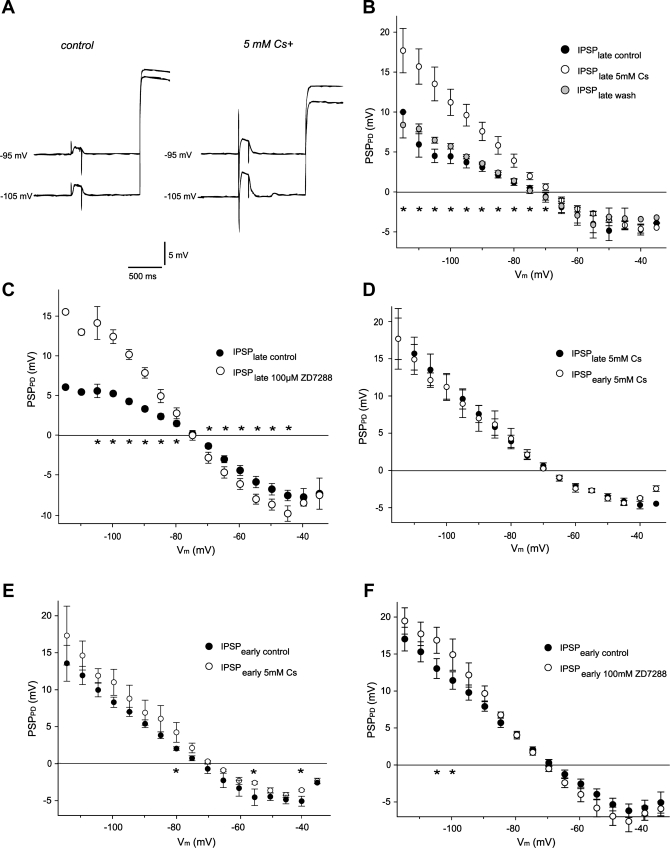Fig. 8.
Ih block by 5 mM CsCl or 100 μm ZD7288 increases LP-evoked IPSP amplitude in the PD cell. A: PSP amplitude at the end of PD polarization under control conditions (left) and in the presence of the Ih blocker 5 mM CsCl (right). B and C: IPSP amplitudes at the end of the PD current injection under control conditions (IPSPlate control) and increased IPSP amplitudes during Ih blockade with 5 mM Cs2+ (IPSPlate 5mM Cs) or ZD7288 (IPSPlate 100μM Z7288). For Cs2+, this effect was partially reversible through washout (IPSPlate wash). ★P < 0.05, control vs. blocker. D: during block of Ih with Cs2+, almost no difference was seen between IPSP amplitudes at the beginning (IPSPearly 5mM Cs) and at the end (IPSPlate 5mM Cs) of PD cell polarization. E and F: Ih blockade with Cs2+ (E) or ZD7288 (F) caused a small increase of IPSP amplitudes at the beginning of polarizing current injection, indicating that a small fraction of Ih channels were open. IPSPearly control, early IPSPs under control condition; IPSPearly 5mM CS, early IPSPs during Ih block with Cs2+; IPSPearly 100μM ZD7288, early IPSPs during Ih block with ZD7288. ★P < 0.05.

